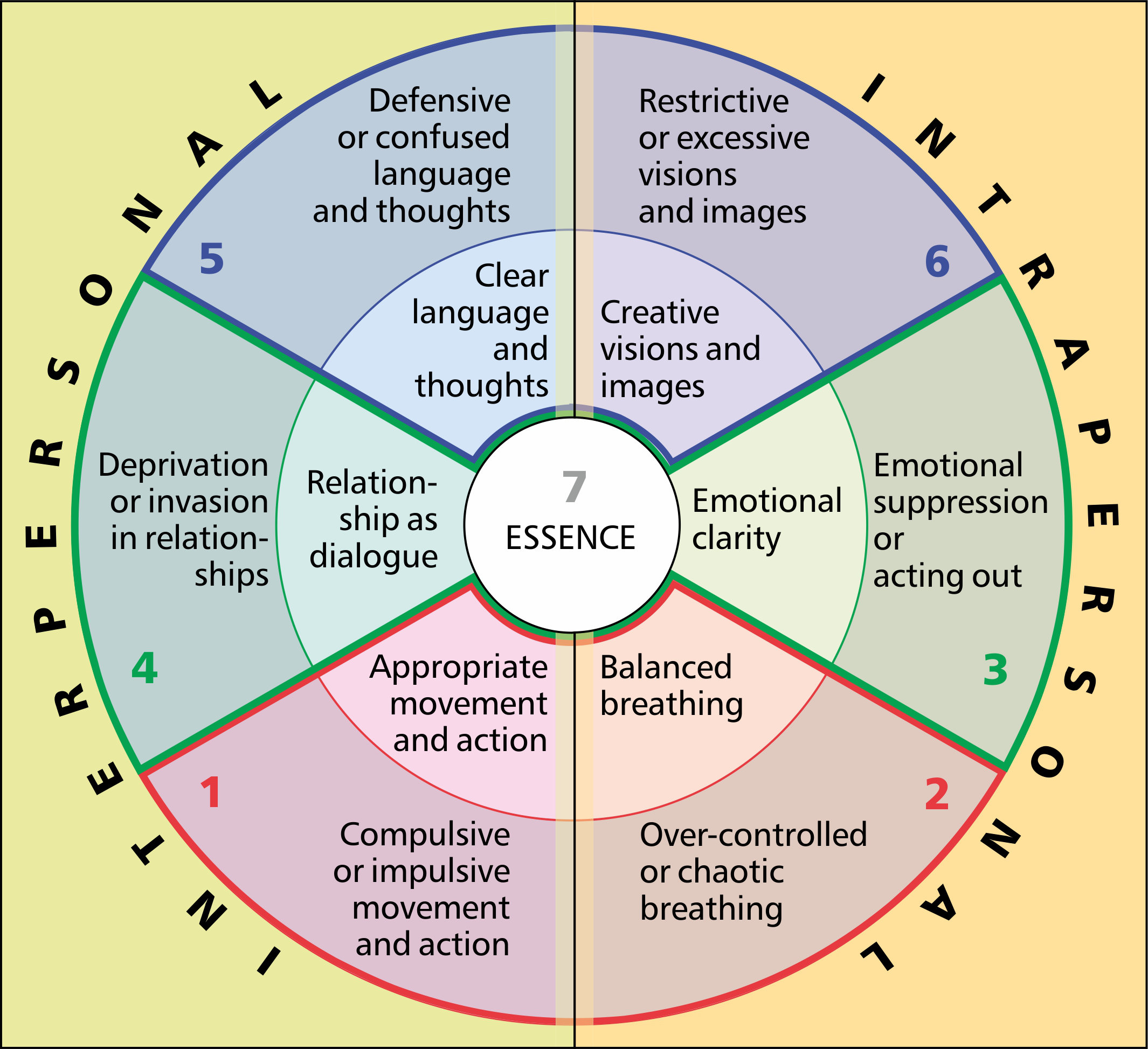|
If we divide the diagram vertically, we can distinguish between the left-hand segments which are more interpersonal, and the intrapersonal right-hand segments.
Of course both sides have a mutual influence over each other, and both surround a transpersonal core self.
If we work with this core self or essence, we are frequently dealing with very subtle energetic
experiences. We want to come nearer to the processes and qualities of the essential core. They are the sources of inner strength and nourishment. They are the starting points of physical, psychological and essential
integration. There are basically three “ways” of reaching them, which should ultimately flow together:
|
